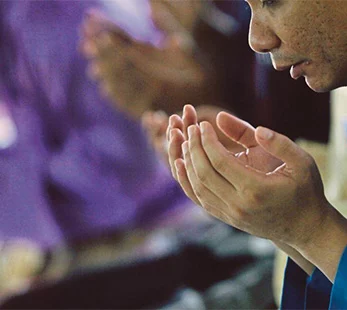THIS author’s previous article (“It’s not enough to say no to drugs” —NST, March 28) defined drug abuse as a health and social issue —addiction is a disease, rehabilitation is its treatment, and addicts are patients.
As a follow-up, this article sheds light on a patient’s aftercare and the responsibilities of the family and community in helping to prevent relapse.
It is imperative to begin by making an obvious but often overlooked statement —drug addiction is a chronic relapsing condition and recovery is necessarily a continuous process.
The fact that a patient has completed initial treatment or stay in a rehabilitation centre is indeed a milestone that should be commended —being away from loved ones, stigmatised by family and friends, feeling guilty and ashamed, and forced to talk about personal matters is no easy feat.
However, leaving a rehabilitation centre should never be confused with, nor viewed as, the end of rehabilitation. Leaving rehab does not mean that one is “cured”. In fact, the journey to recovery must continue. Thinking of rehab as a “quick-fix” for addiction is a set up for relapse.
The reality is that recovery from drug addiction is a long-term process involving not just medical or psychological stabilisation, but also reintegration into family and society.
Ongoing rehabilitation is essential to a patient’s aftercare, and it must be balanced with practical recovery needs, such as a controlled living environment, managing the psychological and social triggers of relapse into drug use, rebuilding relationships and access to jobs.
A patient’s aftercare is largely determined by the type, amount and duration of drug abuse, as well as the complexity of issues that led to drug abuse in the first place. There are deep-rooted, psychological causes as to why one chooses to abuse drugs. It is recovering from these issues that ensure a stable recovery.
While a patient’s aftercare is individually tailored, the essential components should include monitoring by a sponsor, a primary healthcare provider or counsellor, regular drug testing, scheduled appointments for continued therapy, and consistent attendance and participation in support groups.
Such groups, like 12-step meetings (Narcotics Anonymous), and self-help and religious groups, are vital to assist one’s transition from the “rehab bubble” to the “real world”.
Second, it is at the post-rehab stage of recovery that a patient’s family plays an even more important role —to foster a sense of acceptance and belonging for the patient. The aftercare period lasts longer than the initial treatment programme, and it begins with a patient being welcomed back into the family and community.
Indeed, studies have linked the lack of family bonding and social connections to drug abuse.
A study by Harvard University and Baylor College of Medicine this year reported that United States counties with the lowest levels of “social capital” —people’s trust in one another and participation in civic matters —had the highest rates of overdose deaths.
A recent article by Maia Szalavitz in Scientific American (The Social Life of Opioids, Sept 18) implies that recovery is impossible without relationships, both familial and communal.Szalavitz simply observes that “if we want to have less opioid use, we may have to figure out how to have more love”.
Therefore, the government should encourage families to take on the responsibility of caring for a patient who has completed treatment for drug addiction.
For instance, the United Nations Office on Drugs and Crime (UNODC) in Mexico joined forces with television giant Televisa Foundation in 2013 to launch a campaign to “foster the family as a protective shield against drug abuse”.Mejor en Familiahas provided information and strategies for families to cope with drug abuse and psychological issues like building self-esteem.
A similar initiative will be beneficial to our society, as social stigma associated with drug abuse remains high in Malaysia.
It will also create awareness of two key issues that we often ignore —loved ones are also implicated and affected by drug abuse, and they, too, must be provided with support.
We should always keep the latter in mind, particularly since Malaysia is facing an increasing number of synthetic drug users.
Statistics from the National Anti-Drug Agency (Nada) indicated that there were 8,133 syabu users in 2015, double the number of users in 2014 (4,117).
Synthetic drugs are a new challenge altogether. They are cheap and easily available, with no substitutes to help curb dependency (like methadone for heroin users).
Their side effects are more dangerous due to hallucinations, psychosis and aggressive behaviour. Loved ones need to be properly counselled on how to handle such patients.
If patients do not have a home to return to after rehab, it must then be made clear who bears the responsibility for providing them with basic necessities.
They include housing, sober living and job assistance. Is it the responsibility of Nada to ensure that there are enough halfway houses, or should the ketua kampung assist the homeless?
A well-defined policy to support those in transition, but who are without a home, is essential to ensure that different bodies involved in drug abuse eradication in Malaysia —Nada, the Home and Health Ministries, and non-governmental organisations —are clear about their respective responsibilities for aftercare.
Earlier, Deputy Home Minister Datuk Nur Jazlan Mohamed stated that Malaysia had an average of 60 to 70 new drug users daily.
None of them will be able to conquer their addiction on their own while being subject to more stigmatisation and punishment.
Recovery is a long-term process that requires the care, support and commitment of all —the patients, families and communities.
Article by Puteri Nor Ariane Yasmin which appeared in New Straits Times 17th October 2017.





